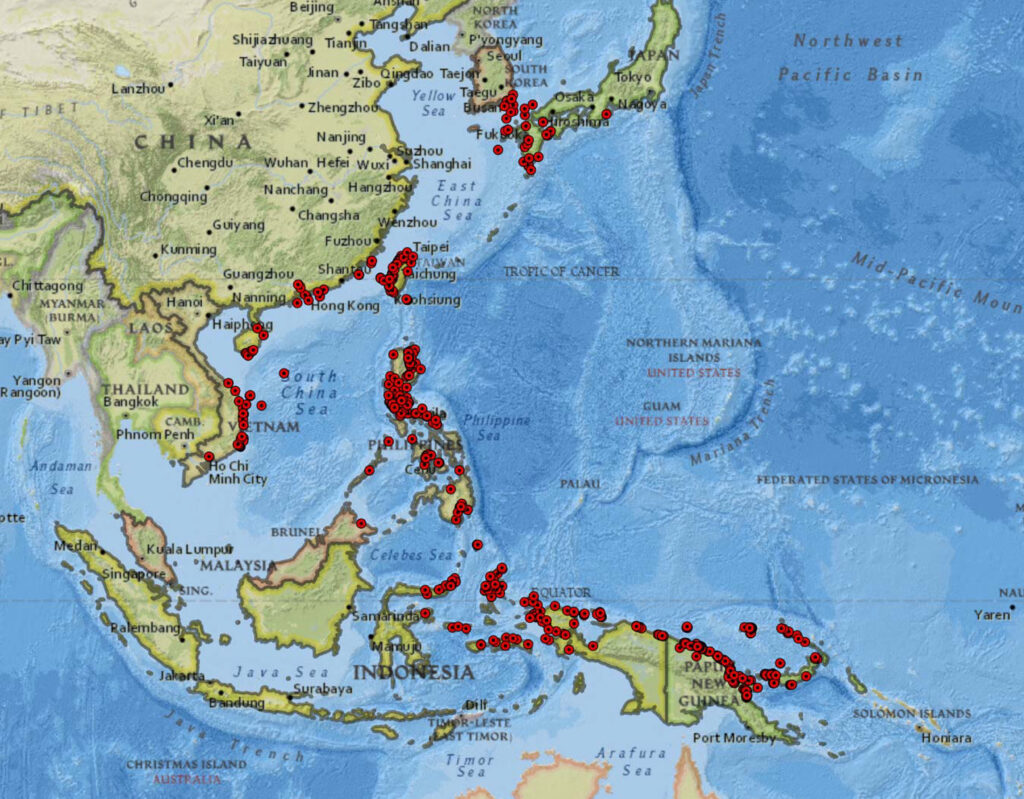
The Air Apaches began their time in the South West Pacific Area by attacking the Salamau area on the eastern end of the north coast of New Guinea. Some of those missions were against airfields while others were aimed at enemy personnel and supplies. Some missions were flown in direct support of Allied troops who were engaged with the enemy on the ridges south east of Salamaua.
Many missions flown during 1943 and early 1944 tended to involve all twelve aircraft of a squadron acting in concert against a target with all four of the squadrons equally represented. As the combat moved westward along the north coast of New Guinea and into Indonesia, Malaysia, and Indochina, fewer airplanes made up a flight, but the remaining airplanes went out on their own missions.
This is not to say that large scale missions no longer occurred, because one of the largest was performed in 1945 in a coordinated 120 aircraft raid against the Clark Field air complex on the Philippine island of Luzon. Smaller missions of four to six airplanes just seem to have become the norm.
Below is an interactive version of the static map shown above. This map can be zoomed in and out for more detail and clicking on a red dot will activate a popup that contains some mission information that includes the airplane tail numbers and pilots involved. In this map, the target location for an entire squadron is represented by one dot and is more or less an average of the individual aircraft bombing targets.
One thing to notice is that for the most part, the 345th fought a very coastal war in that most of their missions were flown against targets located in close proximity to shorelines. With the exception of the Philippine island of Luzon where many missions were flown in support of Allied ground troops or in search of enemy terrestrial shipping, most of their missions were flown near coastlines, looking for cargo ships in harbors, small barges delivering supplies to shore, and airfields that were placed close to the sea.
